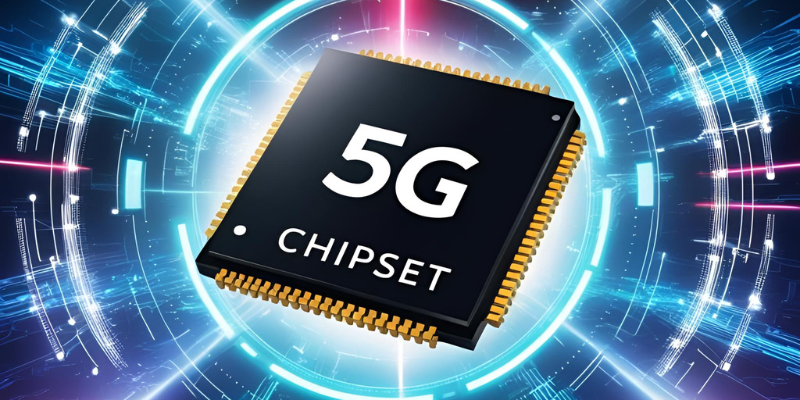A 5G chipset is a specialized component designed to enable devices to connect to and utilize 5G networks. These chipsets are integral to smartphones, IoT devices, and other technologies that rely on the high-speed, low-latency capabilities of 5G.
How Does a 5G Chipset Work?
5G chipset works by processing and transmitting data over 5G networks. Here’s a simplified breakdown:
- Signal Reception and Transmission: The chipset communicates with 5G base stations using advanced antennas and technologies like Massive MIMO (Multiple Input, Multiple Output), which allows multiple data streams to be sent and received simultaneously.
- Data Processing: It decodes and processes the data using advanced algorithms to ensure high-speed and efficient communication.
- Spectrum Utilization: 5G chipsets operate across various frequency bands, including sub-6 GHz and mmWave, to deliver faster speeds and broader coverage.
- Energy Efficiency: These chipsets are designed to optimize power consumption, ensuring longer battery life for devices.
What Are 5G Chipsets Made Of?
5G chipsets are typically composed of:
- System-on-Chip (SoC): Integrates multiple components like the CPU, GPU, and modem into a single chip.
- Radio Frequency Integrated Circuits (RFICs): Handle the transmission and reception of radio signals.
- Application-Specific Integrated Circuits (ASICs): Tailored for specific 5G functionalities.
- Millimeter-Wave (mmWave) ICs: Enable ultra-fast data transfer in high-frequency bands.
These chipsets are manufactured using advanced semiconductor materials like silicon and gallium nitride, which ensure high performance and durability.
Specifications of 5G Chipsets Based on The Latest Advancements:
Key Features of 5G Chipsets
Frequency Bands:
- Operates on sub-6 GHz and mmWave frequency bands.
- Supports multiple bands for global compatibility.
System-on-Chip (SoC):
- Integrates CPU, GPU, modem, and AI processing units.
- Built using advanced semiconductor processes like 6nm or 5nm technology.
Speed and Latency:
- Provides ultra-fast download speeds up to 10 Gbps.
- Ensures low latency, typically under 1 millisecond.
Energy Efficiency:
- Optimized for power consumption to extend battery life.
- Includes advanced power management systems.
AI Integration:
- AI-powered features for enhanced network optimization and device performance.
Multi-Device Connectivity:
- Supports Massive MIMO (Multiple Input, Multiple Output) for simultaneous connections.
- Enables seamless connectivity for IoT devices.
Security Features:
- Enhanced encryption and secure communication protocols.
- Built-in mechanisms to prevent cyber threats.
Compatibility:
- Backward compatibility with 4G LTE networks.
- Future-proof design to accommodate upcoming 5G advancements.
Examples of Popular 5G Chipsets
Qualcomm Snapdragon Series:
- Snapdragon 8 Gen 2: High-end chipset with mmWave and sub-6 GHz support.
- Snapdragon 695: Mid-range chipset with efficient performance.
MediaTek Dimensity Series:
- Dimensity 9200: Flagship chipset with advanced AI and gaming capabilities.
Samsung Exynos Series:
- Exynos 2200: Features AMD RDNA 2 architecture for enhanced graphics.
These chipsets are designed to meet the demands of modern devices, including smartphones, IoT applications, and network infrastructure. If you’d like more specific details about a particular chipset, let me know!

